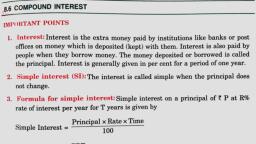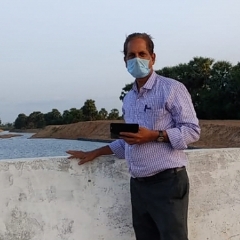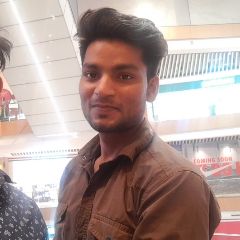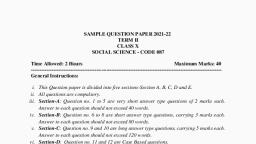Question 1 :
Atomic number of a element is 10. What is the name of the element?
Question 3 :
State true and false: Silver chloride on exposure to sunlight for long duration turns grey due to the formation of silver by decomposition of silver chloride.
Question 4 :
State true or false: The difference between the direct and alternating currents is that the direct current always flows in one direction, whereas the alternating current reverses its direction periodically.
Question 5 :
State true or false: Silver chloride on exposure to sunlight for long duration turns grey due decomposition of chlorine gas from silver chloride.
Question 6 :
<img style='object-fit:contain' src='https://teachmint.storage.googleapis.com/question_assets/cbse_ncert/61b19d0e273b230584979b90.JPG' />
In the above schematic diagram for the preparation of hydrogen gas as shown in the above figure, what would happen if same amount of zinc dust is taken in place of Zn granules in the test tube.
Question 7 :
State true or false: Left atrium transfers oxygenated blood to right ventricle which sends it to different parts of the body.
Question 8 :
A non-metal A is an important constituent of our food and forms two oxides B and C. Oxide B is toxic whereas C causes global warming. To which Group of periodic table A belongs?
Question 9 :
A person needs a lens of power –4.5 D for correction of her vision. What is the nature of the corrective lens?
Question 10 :
Which of the following oxide(s) of iron would be obtained on prolonged reaction of iron with steam?
Question 11 :
<img style='object-fit:contain' src='https://teachmint.storage.googleapis.com/question_assets/cbse_ncert/61b19d12273b230584979b95.JPG' />
In the above figure, what change would you observe in tube B containing calcium hydroxide solution ?
Question 12 :
Atomic number of a element is 10. Identify the period to which this element belongs?
Question 13 :
State true or false: Left ventricle pumps oxygenated blood to different body parts while right ventricle pumps deoxygenated blood to lungs.
Question 14 :
State true or false: In India the AC changes direction after every $\frac{1}{50}$ second.
Question 15 :
State true or false: Sustainable development is planned growth with minimum damage to the environment.
Question 16 :
State true or false: Silver chloride on exposure to sunlight for long duration turns grey due to oxidation of silver chloride.
Question 17 :
Atomic number of a element is 20. What is the name of the element?
Question 18 :
State true or false: The real image formed by a concave mirror is larger than the actual object when source is at a distance equal to radius of curvature of the concave mirror.
Question 19 :
Atomic number of a element is 20.Identify the period to which this element belongs?
Question 20 :
Name the plant hormones responsible for the falling of senescent leaves.
Question 21 :
<img style='object-fit:contain' src='https://teachmint.storage.googleapis.com/question_assets/cbse_ncert/61b19d10273b230584979b92.JPG' />
In the above schematic diagram for the preparation of hydrogen gas as shown in the figure, what would happen if Cu turnings are taken in place of Zn?
Question 22 :
A person needs a lens of power –4.5 D for correction of her vision. What is the focal length of the corrective lens?
Question 23 :
State true or false: Right atrium receives deoxygenated blood from different parts of the body while left ventricle pumps oxygenated blood to different parts of the body.
Question 24 :
Atomic number of a element is 7. What is the name of the element?
Question 25 :
In an electrical circuit three incandescent bulbs A, B and C of rating 40 W, 60 W and 100 W are connected in parallel to an electric source. Which of the following is likely to happen regarding their brightness?
Question 26 :
State true or false: Fleming’s right-hand rule is a simple rule to know the direction of induced current.
Question 27 :
Atomic number of a element is 7. Identify the period to which this element belongs?
Question 28 :
When ethanoic acid reacts with sodium hydrogencarbonate, a salt X is formed and a gas Y is evolved. What is the name of the compound Y?
Question 29 :
State true or false: According to the evolutionary theory, formation of a new species is generally due to accumulation of variations over several generations.
Question 30 :
A metal carbonate X on reacting with an acid gives a gas which when passed through a solution Y gives the carbonate back. On the other hand, a gas G that is obtained at anode during electrolysis of brine is passed on dry Y, it gives a compound Z, used for disinfecting drinking water. What is the name of the compound Z.
Question 31 :
<img style='object-fit:contain' src='https://teachmint.storage.googleapis.com/question_assets/cbse_ncert/61b19d0f273b230584979b91.JPG' />
In the above schematic diagram for the preparation of hydrogen gas as shown in the above figure, what would happen if dilute hydrochloric acid is taken instead of dilute sulphuric acid?
Question 32 :
State true or false: Sustainable development is growth that is acceptable to all the stakeholders.
Question 34 :
Name the plant hormones responsible for the promotion of cell division.
Question 36 :
A metal carbonate X on reacting with an acid gives a gas which when passed through a solution Y gives the carbonate back. On the other hand, a gas G that is obtained at anode during electrolysis of brine is passed on dry Y, it gives a compound Z, used for disinfecting drinking water. What is the name of the compound G .
Question 37 :
State true or false: According to the evolutionary theory, formation of a new species is generally due to movement of individuals from one habitat to another.
Question 38 :
State true or false: The real image formed by a concave mirror is larger than the actual object when source is placed at a distance between the focus and centre of curvature of the concave mirror
Question 39 :
<img style='object-fit:contain' src='https://teachmint.storage.googleapis.com/question_assets/cbse_ncert/61b19d16273b230584979b9a.JPG' />
In the above circuits, heat produced in the resistor or combination of resistors connected to a 12 V battery will be_______.
Question 40 :
A non-metal A is an important constituent of our food and forms two oxides B and C. Oxide B is toxic whereas C causes global warming. Identify A.
Question 43 :
State true or false: Angle of deviation is the angle , between the incident ray and the emergent ray when a light ray passes through a glass prism.
Question 44 :
<img style='object-fit:contain' src='https://teachmint.storage.googleapis.com/question_assets/cbse_ncert/61b19d15273b230584979b99.JPG' />
In the above figure, The path of a ray of light passing through a rectangular glass slab tested by four students are shown in above Figure as A, B, C and D. Which one of them is correct?
Question 45 :
State true or false: According to the evolutionary theory, formation of a new species is generally due to sudden creation by nature.
Question 46 :
State true or false: Unisexual flowers possess either stamen or pistil.
Question 47 :
A metal carbonate X on reacting with an acid gives a gas which when passed through a solution Y gives the carbonate back. On the other hand, a gas G that is obtained at anode during electrolysis of brine is passed on dry Y, it gives a compound Z, used for disinfecting drinking water. What is the name of the compound Y.
Question 48 :
The substance that triggers the fall of mature leaves and fruits from plants is ______.
Question 49 :
State true or false: Sustainable development is stopping all developmental work to conserve the environment.
Question 50 :
State true or false: Sustainable development is growth irrespective of the extent of damage caused to the environment.











































